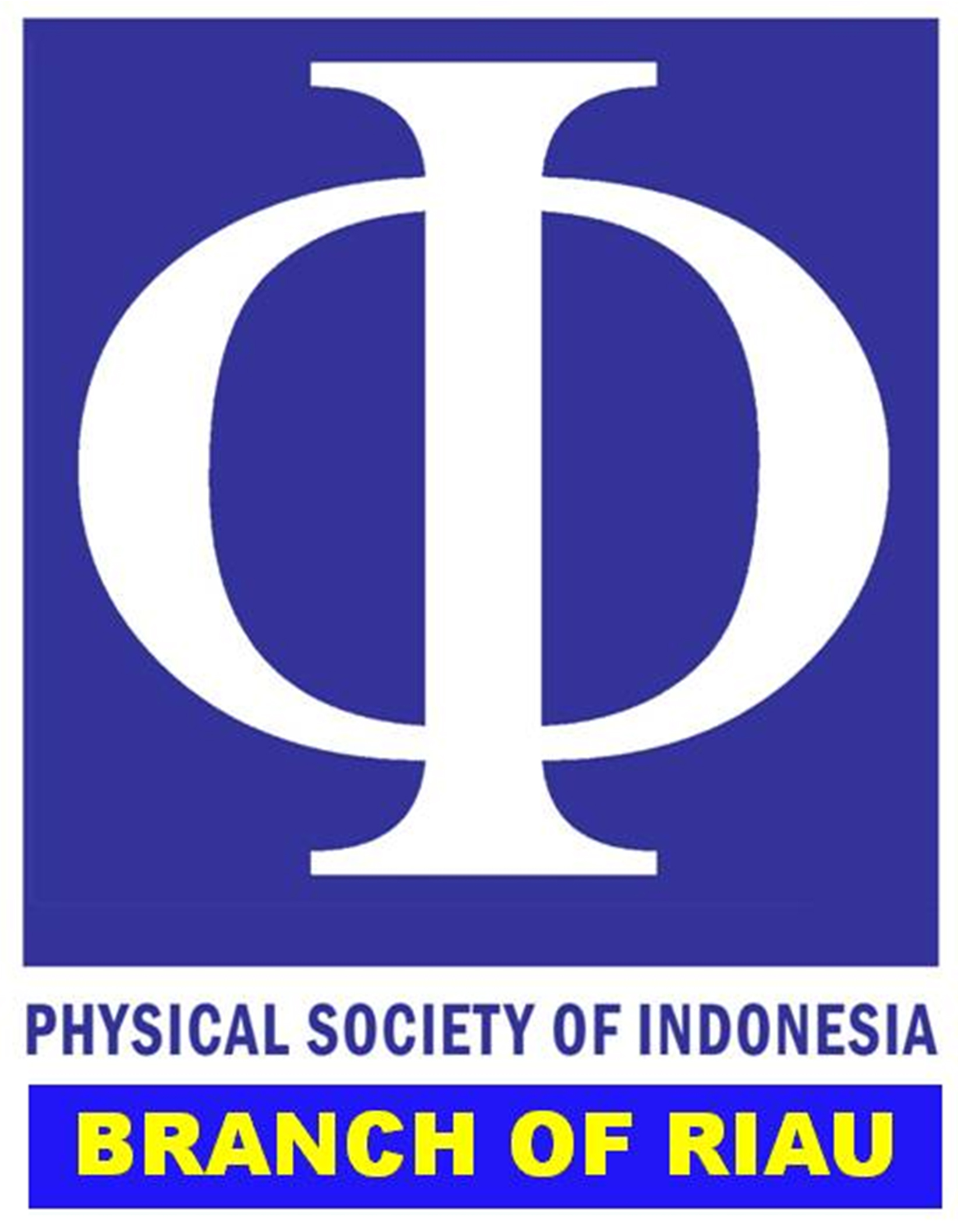Identification of subsurface structure using the pseudo-gravity method of magnetic data at the geothermal area of Sonai Village and its surroundings, Puriala, Konawe Regency
Abstract
Keywords
Full Text:
PDFReferences
Hermawan, D., Sugianto, A., Yushantarti, A., Dahlan, Munandar, A., dan Widodo, S. (2011). Kajian Panasbumi Non Vulkanik Daerah Sulawesi Bagian Tenggara. Bandung: Pusat Sumber Daya Geologi, Kementerian ESDM.
Surono. (2013). Geologi Lengan Tenggara Sulawesi. Bandung: Badan Geologi, Kementerian ESDM.
Risdianto, D., Permana, L.A., Wibowo, A.E., Sugianto, A. & Hermawan, D. (2015). Sistem Panasbumi Non Vulkanik di Sulawesi. Bandung: Pusat Sumber Daya Mineral, Batubara dan Panas Bumi, Badan Geologi, Kementerian ESDM.
Brophy, P. (2011). An Introduction to Geothermal Energy. CGEC Geothermal Outreach Workshop. California: EGS Inc.
Grupta, H. & Roy, S. (2007). Geothermal Energy. Amsterdam: Elsevier.
Anonymous. (2017). Buku Potensi Panas Bumi Indonesia Jilid 2. Jakarta: Pusat Sumber Daya Mineral, Batubara dan Panas Bumi, Badan Geologi, Kementerian ESDM.
Baskara, M. Y. (2020). Identifikasi Sebaran Fluida Panas Daerah Panasbumi Puriala, Kabupaten Konawe Menggunakan Metode Geolistrik Resistivitas Konfigurasi Wenner-Schlumber. Skripsi. Universitas Halu Oleo.
Sariani, Manan, A., Bahdad & Chahyani, R. (2024). Estimation of subsurface structure using Euler Deconvolution method of magnetic data at the geothermal area of Sonai Village and its surroundings, Konawe Regency. JURNAL GEOCELEBES, 8(2), 162–177. https://doi.org/10.70561/geocelebes.v8i2.36380
Medhus, A.B. & Klinkby, L. (2023). Engineering Geophysics, 1st Edition. Leiden: CRC Press.
Telford, M.W., Geldard, L.P., Sheriff, R.E. & Keys, D.A. (1990). Applied Geophysics 2nd ed. London: Cambridge University Press.
Safrilia, P., Muhardi & Perdhana, R. (2024). Pemodelan 2D Struktur Geologi Bawah Permukaan di Daerah Manifestasi Panas Bumi Buaran, Kabupaten Brebes, Berdasarkan Anomali Magnetik. JFT: Jurnal Fisika Dan Terapannya, 11(1), 91–106. https://doi.org/10.24252/jft.v11i1.48120
Hanatha, F.D. & Hamid, H. (2024). Integrasi metode gravity dan metode geomagnetik menggunakan Dekonvolusi Euler untuk delineasi struktur pada sistem panas bumi di kawasan Candi Umbul-Telomoyo, Magelang, Jawa Tengah. Jurnal Geosains dan Teknologi, 7(1), 19–28. https://doi.org/10.14710/jgt.7.1.2024.19-28
Puspita, M.B., Perwita, C.A., Maryanto, S. & Suyanto, I. (2023). Analisis Metode Magnetik pada Daerah Manifestasi Panas Bumi Karangrejo, Kabupaten Pacitan. INSOLOGI: Jurnal Sains Dan Teknologi, 2(5), 907–916. https://doi.org/10.55123/insologi.v2i5.2662
Luthfin, A. & Jubaidah, N.A. (2023). Identification of geothermal distribution in the Banyu Biru hot water source using the magnetic method. Indonesian Journal of Applied Physics (IJAP), 13(2), 215–25. https://doi.org/10.13057/ijap.v13i2.72305
Tanjung, R. U. S., Pujiastuti, D. & Putra, A. (2023). Interpretasi struktur bawah permukaan menggunakan data anomali medan magnet daerah manifestasi panas bumi Sampuraga Kabupaten Mandailing Natal. Jurnal Fisika Unand, 12(4), 554–560. https://doi.org/10.25077/jfu.12.4.554-560.2023
Hidayat, H., Putra, A. & Pujiastuti, D. (2021). Identifikasi sebaran anomali magnetik pada daerah prospek panas bumi Nagari Aie Angek, Kabupaten Tanah Datar. Jurnal Fisika Unand (JFU), 10(1), 48-54. https://doi.org/10.25077/jfu.10.1.48-54.2021
Sitorus, E. & Tampubolon, T. (2018) Penentuan struktur bawah permukaan area panas bumi Tinggi Raja Kabupaten Simalungun dengan menggunakan metode magnetik. JURNAL EINSTEIN, 6(1), 26-33. https://doi.org/10.24114/einstein.v6i1.12060
Simandjuntak, T.O., Surono & Hadiwijoyo, S. (1993). Peta Geologi Lembar Kolaka Skala 1:250.000. Pusat Penelitian dan Pengembangan Geologi.
Zakaria, Z. & Sidarto. (2015). Aktifitas tektonik di Sulawesi dan sekitarnya sejak mesozoikum hingga kini sebagai akibat interaksi aktifitas tektonik lempeng tektonik utama di sekitarnya. Jurnal Geologi dan Sumberdaya Mineral, 16(3), 115–127. https://doi.org/10.33332/jgsm.geologi.v16i3.36
Surono & Hartono, U. (2013). Geologi Sulawesi. Jakarta: LIPI Press.
Schmidt, A. (2009). Electrical and magnetic methods in archeological prospection. Geophysics and Landscape Archeology, 67–81.
Baranov, V. (1957) A new method for interpretation of aeromagnetic maps, pseudo-gravimetric anomalies. Geophysics, 22, 359–363. http://dx.doi.org/10.1190/1.1438369
Alamdar, K., Ansari, A. H. & Ghorbani, A. (2009). Edge detection of magnetic body using horizontal gradient of pseudogravity anomaly. Geophysical Research, 4082.
Pancasari, A., Safani, J. & Manan, A. (2020). Interpretasi struktur bawah permukaan daerah Kota Kendari berdasarkan data anomali medan magnetik lokal. Jurnal Rekayasa Geofisika Indonesia (JRGI), 02(2), 45–53.
Fikar, M., Hamimu, L., Manan, A. & Suyanto, I. (2019). Pemodelan 2D data magnetik menggunakan transformasi RTP untuk pendugaan sesar di Daerah Kasihan, Pacitan, Jawa Timur. Jurnal Rekayasa Geofisika Indonesia (JRGI), 02(01), 33–42.
Blakely, R.J. (1995). Potensial Theory in Gravity and Magnetics Applications. Cambridge: Cambridge University Press.
Blakely, R.J. & Simpson, W. (1986). Approximating edge of source bodies from magnetic or gravity anomalies. Geophysics, 7(51), 1.494–1.498. https://doi.org/10.1190/1.1442197
Tamburaka, E. (2019). Resiko dan mitigasi bencana gempa tektonik di Kabupaten Konawe. Jurnal Askara Publik, 3(2), 222–235.
DOI: http://dx.doi.org/10.31258/jkfi.22.2.73-84
Refbacks
- There are currently no refbacks.

This work is licensed under a Creative Commons Attribution-NonCommercial 4.0 International License.
Indexing by:








